Amazing Air Plants: How to…
Spending more time at home this winter? Looking to liven up your living space by adding some new plants? Look no further than the air plant (Tillandsia). These unique plants have an interesting sculptural quality, right for any decor, and—best of all—need no soil to grow!
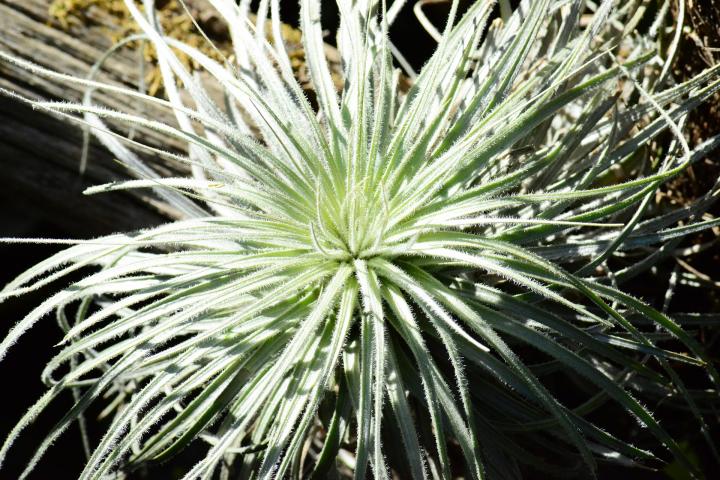
I love the fuzzy edges on this South American native.
Air plants having a moment as houseplants because they are adorable, tiny, easy to grow, do not need soil, and also need little light to thrive. Fuzzy, furry, spiky or trailing, they’re each unique and almost like house “pets.”
Forming a rosette of spiraling leaves that can be fuzzy, curly, or spiky in colors ranging from green and silver to peach or red, air plants have an almost other-worldly quality like they have crawled out from under the sea or been dropped from a UFO.
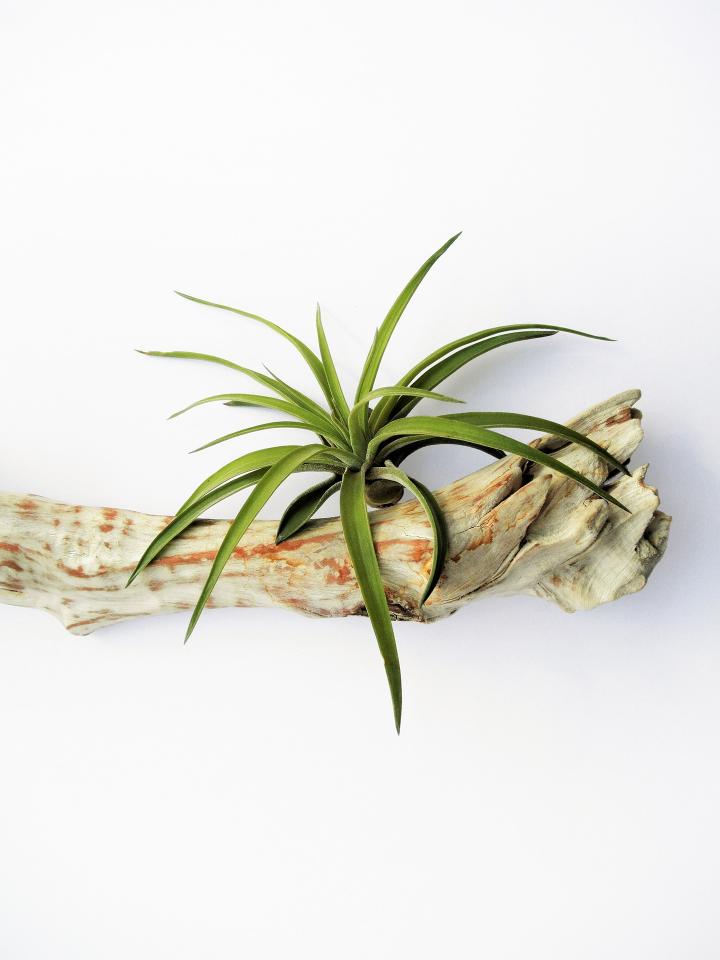
Mounted on driftwood.
Since they don’t need to be anchored in soil they can displayed in a wide variety of creative ways. Use floral wire to secure them to a piece of tree branch, driftwood, or slab of bark.
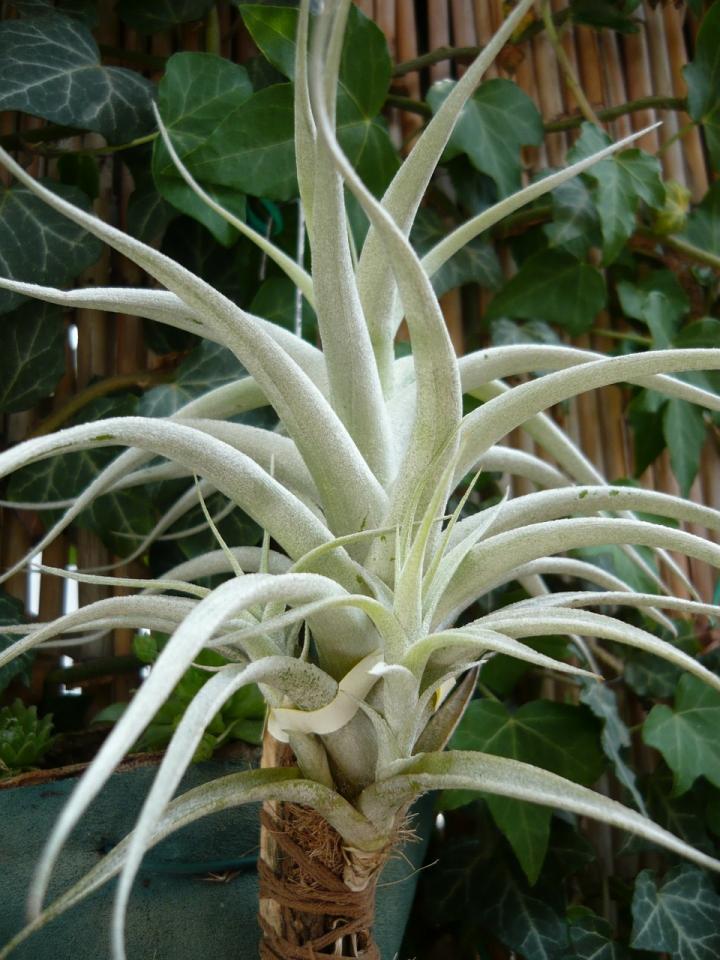
T. albida doesn’t mind being tied to a stake.
You can even use hot glue, velcro, or other adhesives such as liquid nails to attach them to a wall or other surface. They are easy to hang in a window by wrapping wire or string around the base a few times or sit them in any type of container that has an appropriate size opening such as a candlestick, sea shell, or egg cup. The possibilities are endless. Just don’t relegate them to a dark shelf; they need bright indirect light or filtered sunlight. If they get too much direct sun they can get sunburned. Silver leaved varieties can take more sun than those with green leaves.
What Are Air Plants?
In nature, these plants grow above the ground, their roots anchoring them to rocky cliffs and tree branches. They may cling to a tree for support but take no nutrients from the host plant making them epiphytes and not parasites. In the Bromeliad family, there are over 600 species and varieties of Tillandsias for you to choose from.

The Spanish moss that grows abundantly in the South is not a moss at all but an air plant – Tillandsia usneoides.
Native from the southeastern US, throughout Mexico and Central America, all the way to northern Argentina, the plants are frost tender: 60 to 80 degrees is the optimal temperature range for them. In warm climates they can be grown outdoors year-round. In colder locations they can spend the summer outdoors in dappled shade, protected from direct sun.
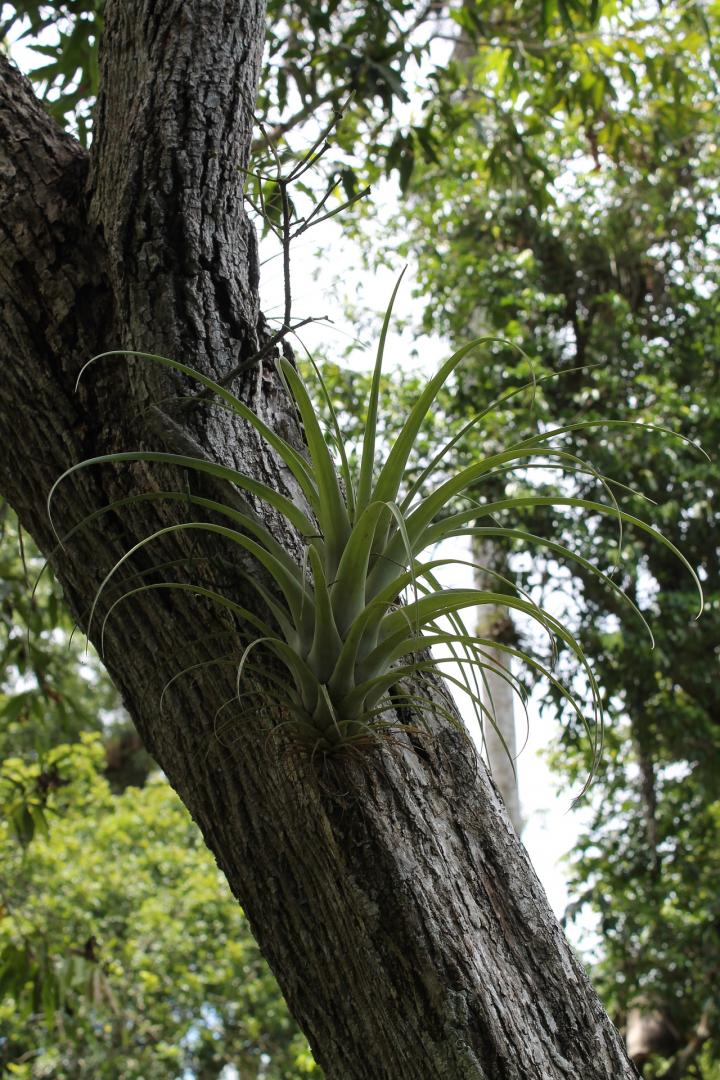
T. recurvata growing out of a crack in the bark, this air plant just uses the tree for support not nutrients.
Watering Air Plants
Air plants might not need soil to grow but they need water—and the right amount of water. And for many air plants, misting is not enough. They need to be submerged in water.
Their leaves have scales called trichomes that can absorb water and nutrients. Since they can’t absorb enough moisture from the air inside your home, they do need to be misted regularly and if possible soak them in a bucket of room temperature water for 20 minutes to an hour once or twice a week.
Not all air plants are the same—and how much water your air plant needs is based on where it is from. Those from arid regions of the Americas will be content with a couple of heavy mistings a week while those from the rainforest will need a good long dunk twice a week.
Your plant will let you know when it needs water. Look closely and you will notice that the leaves are starting to roll or are curling more than usual. Brown leaf tips mean it is definitely not getting enough water. One rule of thumb is that the finer the leaves the more often the plant will need water and green leaves need more water than silvery ones.
After watering, give the plant a shake to remove excess water from the center or put it upside down on a towel to drain. Water left sitting in the crown of the plant can cause it to rot. Proper watering is the key to success with air plants.
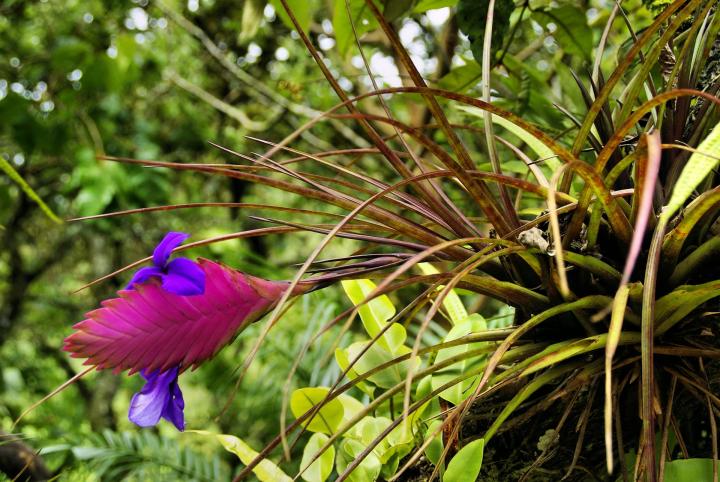
Many air plants have gorgeous exotic flowers.
More Air Plant Care
Pups: Tillandsias bloom only once in their lifetime. These stunning blossoms can last from several days to several months depending on the variety. After flowering the plant will start to produce baby plants called pups. They can be removed when they are about 1/3 to 1/2 the size of the mother plant. This can take a year or more! Eventually the mother plant dries up and dies off.
Fertilizing: When fertilizing, use a water soluble fertilizer meant for bromeliads or orchids diluted to half strength. Add it to the water before soaking the plants. Fertilize once a month during spring and summer but don’t overdo it. They really don’t need a lot of fertilizer to thrive.
Light: While they do not require a lot of sunlight, they would prefer a room with windows that receives 4 to 6 hours of bright, filtered light per day.
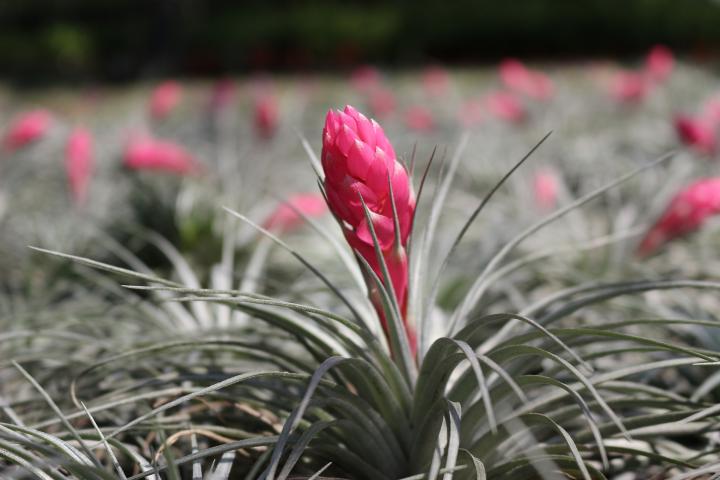
This one is aptly named Cotton Candy.
If you choose to display them in glass containers remember that they need air circulation so no closed terrariums please. They’re called “air” plants for a reason!
They are best in an open dish garden. Don’t put them on anything that holds water like moss or soil or they could rot.
Or course, don’t plant them in dirt. Ever. Enjoy the freedom from soil and put them in creative places!
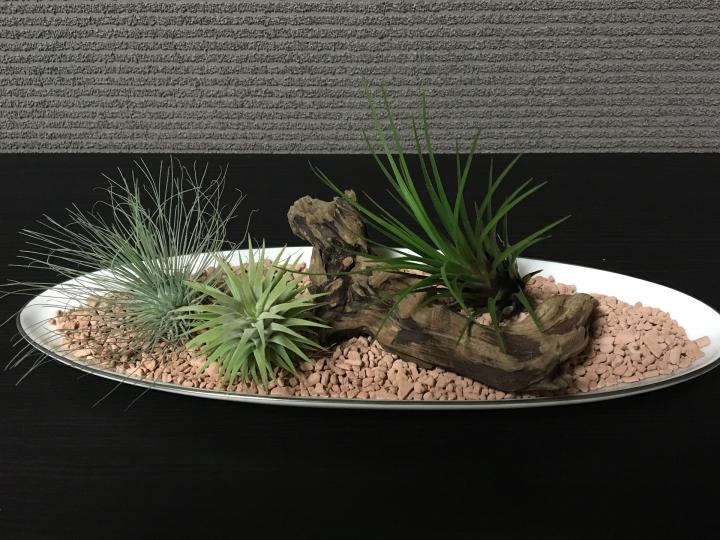
Have fun finding ways to display your new plants!
